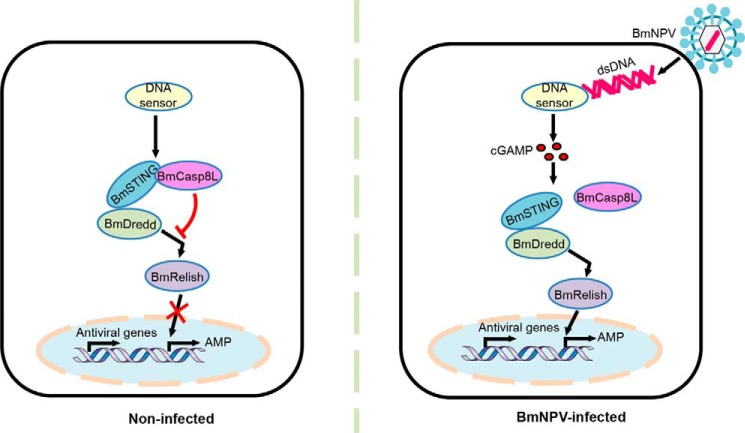Figure 9.
Schematic model representation of BmSTING-dependent activation of BmRelish/NF-κB in response to NPV infection. In noninfected cells, BmSTING interacts with BmCasp8L, which is an inhibitor of the BmSTING–BmRelish/NF-κB pathway and suppresses the activation of innate immunity. Upon viral infection, production of cGAMP is triggered by signals from some unknown DNA sensors that recognize viral DNA. cGAMP then induces the translocation of BmSTING from the cytoplasm to the prenuclear region. As a result, the interaction between BmSTING and BmCasp8L decreases, and BmSTING tends to interact with BmDredd, promoting the processing of BmRelish/NF-κB. Consequently, activated BmRelish is translocated to the nucleus to initiate the transcription of a plethora of target genes, including genes encoding antiviral factors and antimicrobial peptides.

